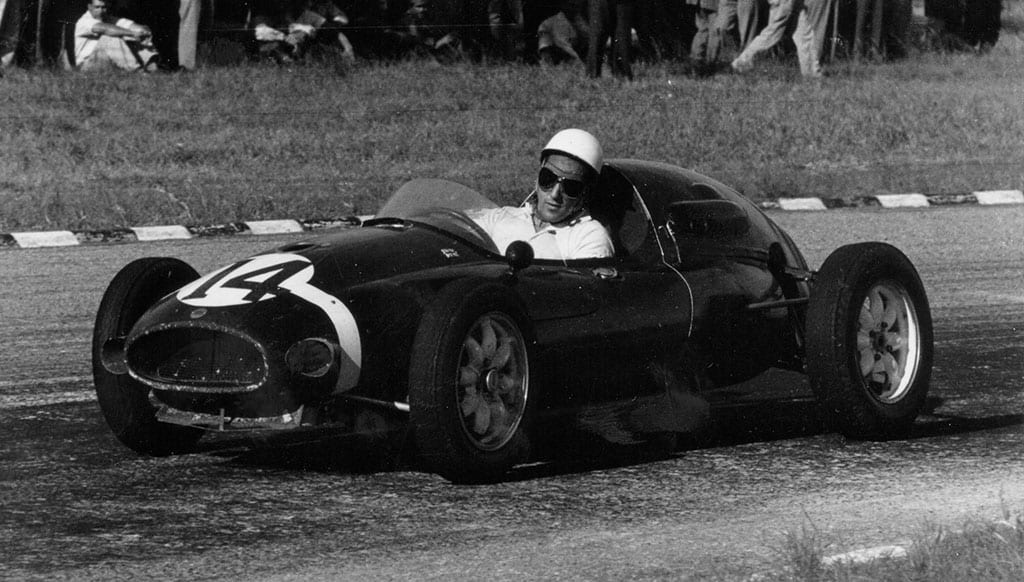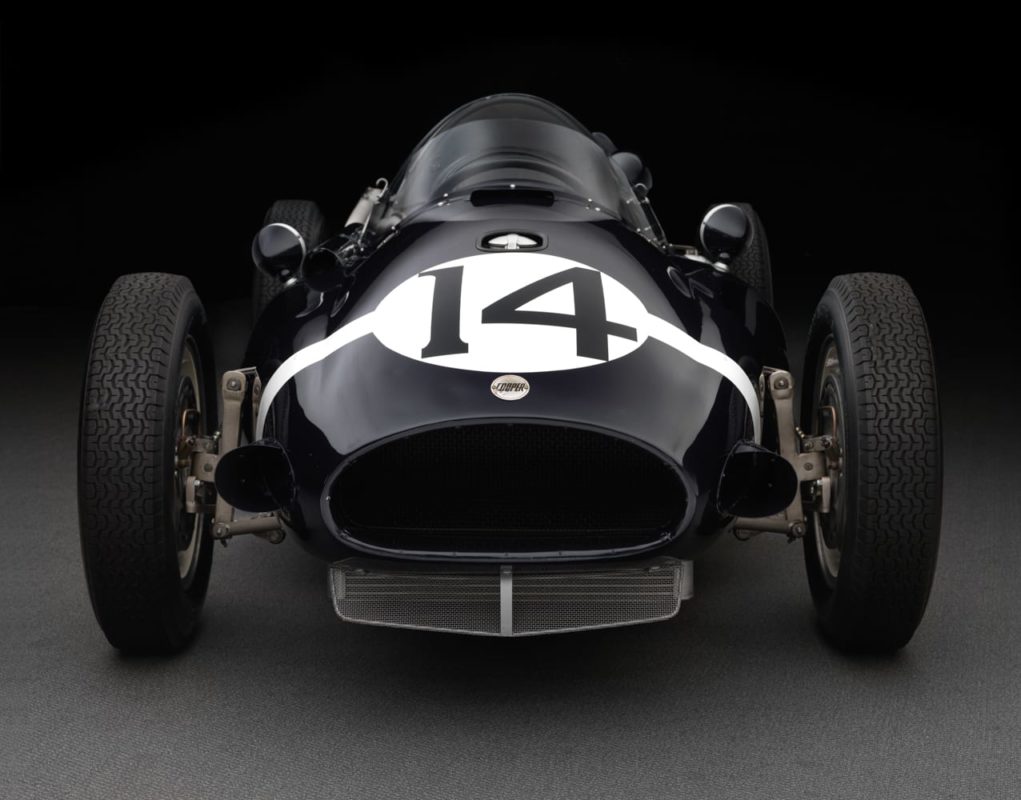Tech Specs
Four-cylinder in-line engine, twin overhead camshafts, 1960 cc, 180 bhp at 6500 rpm.
Before/After
1957 Cooper


About the 1957 Cooper Climax T 43 Formula 1
Nobody expected the display car to win the Argentine Grand Prix in 1958, including its driver, Stirling Moss. Murphy’s Law was in full operation.
The car’s transmission drain plug fell out during practice, which produced considerable angst because the gearbox was already the car’s weak link. The Rob Walker crew also discovered that the Cooper’s tires were only supposed to be good for 40 laps and the race had 80. The car did not have knockoff hubs; a tire change would take forever. That night Moss’s wife accidentally stuck her finger in his eye, so Stirling had to practice with an eye patch.
His eye somewhat better for the race, Moss, sans eye patch, started 7th. Arrayed against him were nine cars. He soon worked his way up to 4th, behind Fangio’s and Behra’s Maseratis and Hawthorn’s Ferrari. Third place was his the following lap. On lap 4 the Cooper’s clutch broke, leaving the gearbox jammed in second. But, finally, Murphy’s Law metamorphosed into what Moss called “the most incredible stroke of luck.” A thrown-stone lodged itself in the transmission’s gear change interlock device, and gave
Moss back the rest of his gears (though still pitted, Moss vaulted into the lead. The Cooper’s opponents were sure the car would have to come in for a tire change; the Walker crew helped convince them by positioning spare wheels on the pit apron. Ferrari reserve driver Phil Hill said afterward that “we were all sitting around content, knowing this damned little bug was going to have to change tires.” Moss saw a white spot on his rear rubber widen into an ever-increasing band as lap passed lap. He drove gingerly, as much as possible on the grass and the oil-soaked sections of the circuit. And he prevailed. The race was his at an 83.57 mph average. “Quite startling” was Moss’ phrase. Phil Hill said the Ferrari team manager couldn’t believe “his masterpieces had been beaten by this horrible iddy-biddy thing with its engine in the wrong end.”
The 1958 Argentine Grand Prix marked the beginning of a revolution.
Photos – Peter Harholdt













